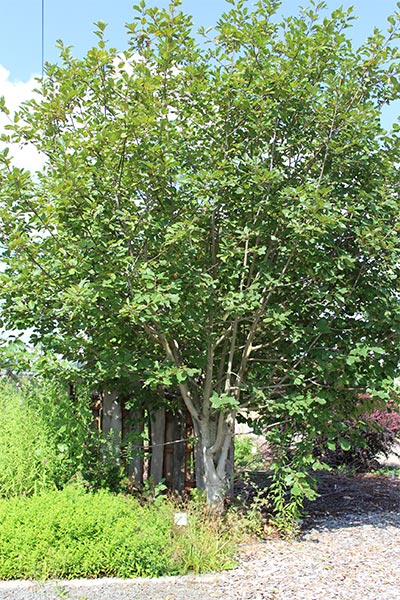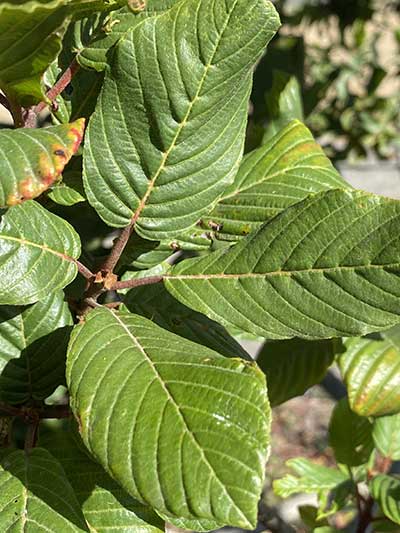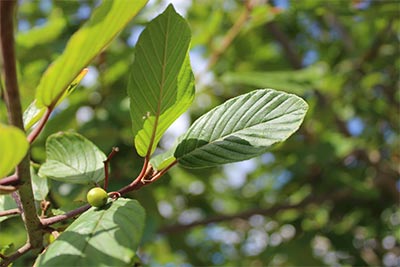Cascara Tree
- Scientific Name: Rhamnus purshiana
- Garden: Beneficial Insects and Compost Garden, Rain Garden, Wildlife Garden
- Plant Type: Tree
- Evergreen/Deciduous: Deciduous
- Sun/Shade Exposure: Full Sun or Part Shade
- Moisture Requirements: Moist, Well-Drained
Plant Information
Cascara is known in both the native plant as well as the medical trade. In the late 1800’s it was discovered that the bark from the Cascara tree could be used as a mild cathartic, helping the symptoms of habitual constipation. Also known as Chittam, or Cascara Buckthorn. Morphology: Cascara is a deciduous tree that can attain a mature height of 30’ and width of 15’. In the southern portion of its range (California) it often becomes a small shrub. Leaves are borne in an alternate fashion at the ends of the limbs. Leaves are simple and elliptic to oblong in shape. Mature leaves can be up to 6” long. They have 10-15 parallel veins and a pointed tip. During the growing season the leaves are dark green on their upper surfaces and lighter below. Fall foliage can become a very intense yellow, with shades of orange and red possible. In May small green-white flowers appear. Flowers have sepals, petals, and stamens in clusters. Flowers are classified as umbels. Flowers morph to small black berries (known as drupes). They are obtusely 3-angled, about the size of a large pea, and contain 3 black, shining seeds. Immature berries are red but mature to deep purple to black. Adaptation: The Cascara tree can grow in both sun and shade. It prefers moist, well drained sites. This native tree grows from northern British Columbia south into California and east into Idaho and Montana. Pests: None reported.
Data Source
https://www.pnwplants.wsu.eduPlant Photos









